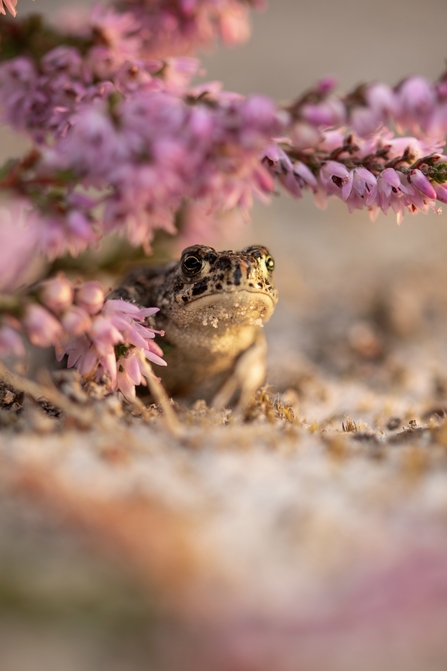Over the last century, the natterjack toad has experienced a significant decline in population and range primarily because of habitat loss and fragmentation. They are now highly protected alongside their habitat.
Syderstone Common is one of only 60 sites in the UK where the natterjack toad is found – and one of four sites in Norfolk. Now largely restricted to coastal sand dunes, including Holme Dunes and Holkham, Syderstone is one of the few examples of an inland natterjack breeding site in the country.
Anne Simpson-Large, Deputy Reserves Manager for West Norfolk, said: ‘We have been monitoring natterjacks at Syderstone since 1974. We follow the national recording scheme that is led by ARC (the Amphibian and Reptile Conservation Trust) and record the number of strings of spawn each year. This tells us how many breeding females there are, and how many toadlets emerge from the ponds – so we can compare success year on year.

